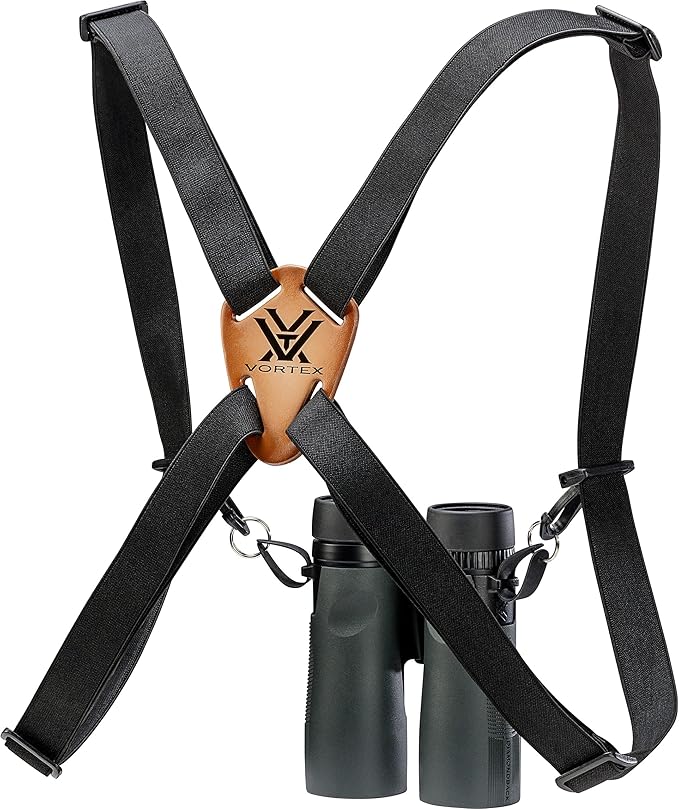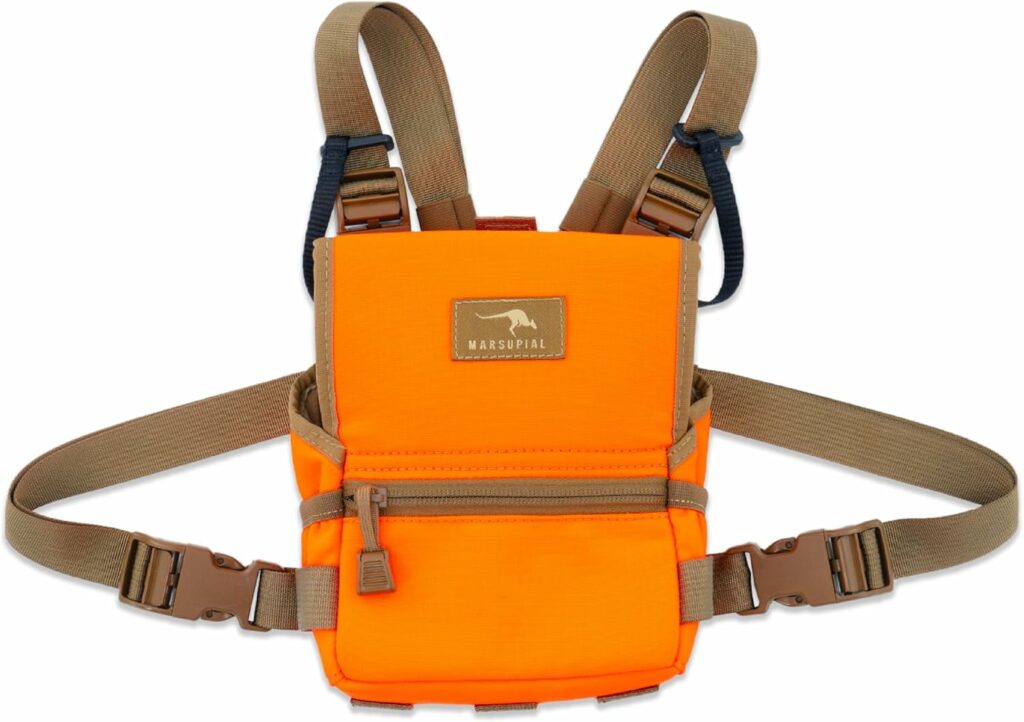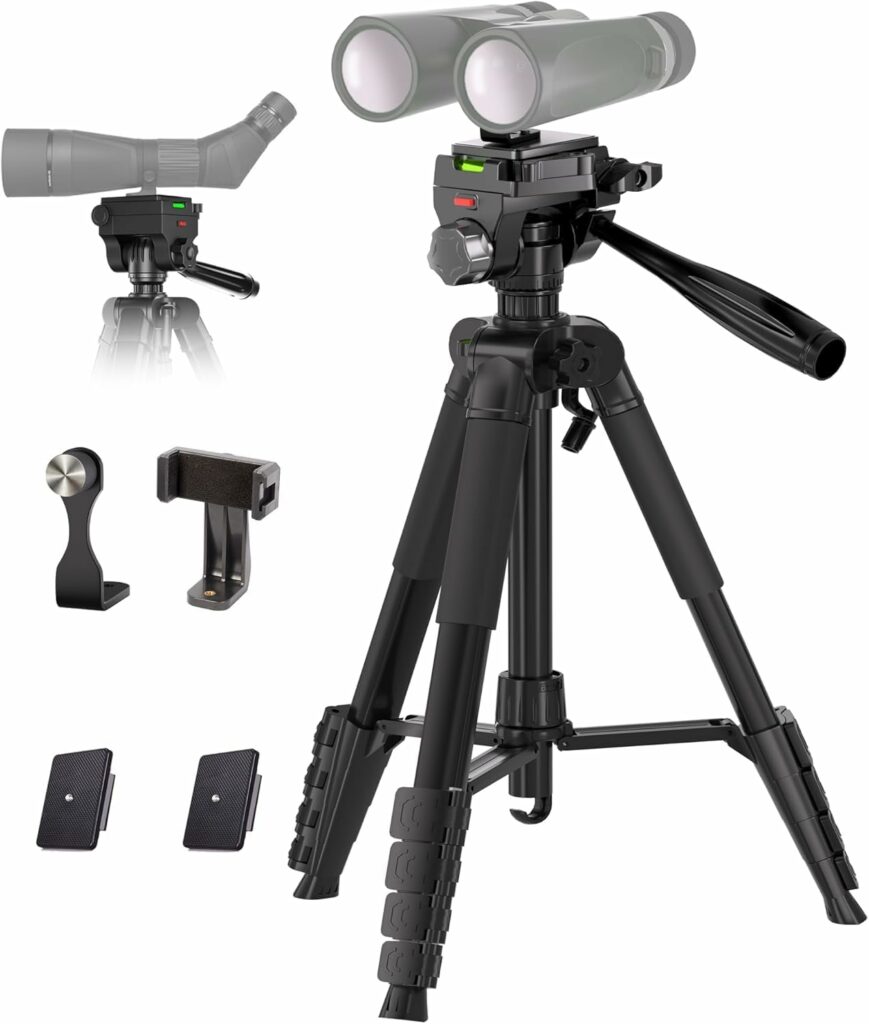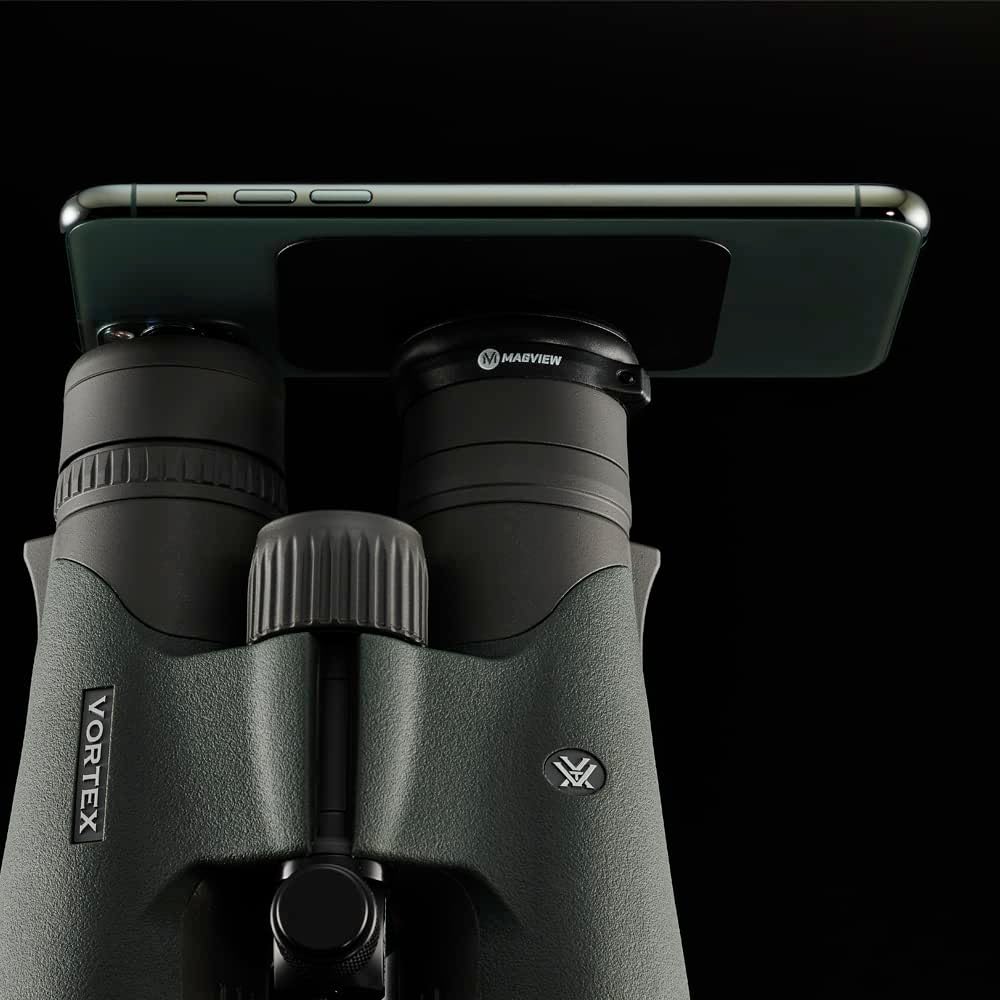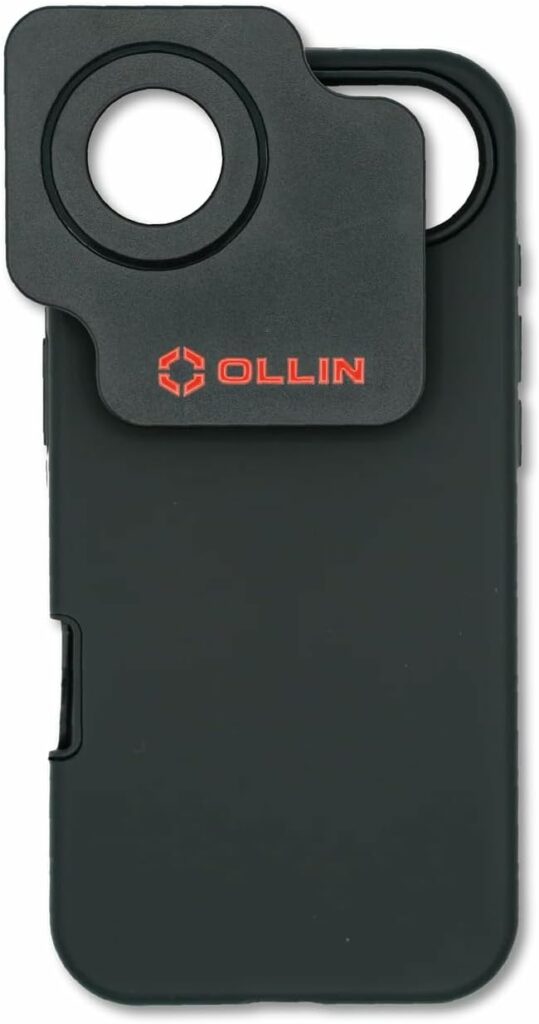Contents
- 1 1. Binocular Harnesses: Keeping Hands Free and Lenses Secure
- 2 2. Rangefinder Pouches and Add-On Storage
- 3 3. Tripod Adapters for Hands-Free Glassing
- 4 4. Keeping Lenses Clean and Protected
- 5 5. Weather Protection and Waterproof Gear
- 6 6. Phone Adapters for Digiscoping
- 7 7. Modular Attachment Systems and Extra Organization
- 8 8. Accessories for Special Conditions and Extra Comfort
- 9 Final Binocular Assessory Tips
Carrying binoculars is something I do every time I head out into the field for a hunt. I know how important it is to protect my optics, keep them close at hand, and make my experience as comfortable and efficient as possible. Over time, I’ve found that the right accessories really can make time in the woods smoother and more enjoyable.
QUICK LOOK: Handy Binocular Accessories for Hunters
- Binocular Harnesses: I switched to a chest-mounted binocular harness a while back. This simple change spreads the weight across my shoulders and upper back, making it way more comfortable than a standard neck strap.
- Pouch for Rangefinder: Many binocular harnesses let me add a dedicated pouch for my rangefinder so it’s always right where I need it. I like pouches that stay put while I’m crawling, yet let me access my rangefinder with one hand.
- Tripod and Adapter: When I’m scouting big stretches of hillside, holding binoculars steady by hand gets tiring fast. A tripod adapter lets me mount my binoculars securely to a tripod, so I can glass hands-free as long as I need.
- Lens Cleaning and Protection: Dirty or scratched lenses can quickly ruin a hunt. I always pack a lens cleaning kit—usually something small enough to fit in my harness or pocket. I always keep my objective lenses covered when I’m not glassing. Flip-down caps or attached covers are handy because I can’t lose them.
- Weatherproof Protection: Rain, snow, and sudden weather shifts are part of hunting, so I choose accessories that keep my optics dry. Waterproof covers for binoculars and harnesses with built-in rain shields give me peace of mind when storms blow in.
- Smart Phone Adapter: Catching a close-up picture of elk, deer, or birds through my binoculars is easier than ever thanks to phone adapters. These are small clamps or brackets that mount a smartphone camera directly behind my eyepiece, letting me snap photos or record video through my binoculars.
- MOLLE Systems: Many harnesses and packs now feature MOLLE systems or similar webbing. With this setup, I can add or remove pouches based on the hunt, carrying everything from wind indicators to small snacks.
There are small tweaks you can make with the right gear, and those little differences add up whether I’m glassing a hillside for hours or just hiking between spots. From harnesses that take the pressure off my neck to adapters that help me use my phone for capturing wildlife shots, I’ve collected some insights into which binocular accessories actually help hunters most.
As optics get more advanced, it’s worth tracking down quality gear that keeps pace and holds up under tough conditions. Comfort, safety, and function are at the top of my list each time I gear up. In this article, I’m breaking down the best gear I’ve used, tested, or seen others swear by.
These are the practical accessories that help improve comfort, keep optics safe, and make my hunting trips just a little more successful every time. Whether you’re new to hunting or a seasoned veteran, there’s something here that can give your setup a boost.
1. Binocular Harnesses: Keeping Hands Free and Lenses Secure
If you’ve ever spent hours with binoculars swinging from your neck, you know how uncomfortable that can get. I switched to a chest-mounted binocular harness a while back. This simple change spreads the weight across my shoulders and upper back, making it way more comfortable than a standard neck strap.
A good harness holds my optics close against my chest, keeping them secure but instantly accessible. I look for features like silent closures (magnetic ones are my favorite), so I don’t make noise when lifting my binoculars. Some harnesses offer modular setups, with attachment points for other vital gear like a GPS unit, rangefinder pouch, or small flashlight. Many newer models even improve ventilation to keep you cool, especially during long hours in the field.
Different Types You’ll Find:
- FullEnclosed Packs: These pouches surround my binoculars, protecting them from rain, dust, and brush. Models like the Marsupial Gear Enclosed Binocular Pack and the Alaska Guide Creations models have saved my lenses more than once. If you often hunt thick brush or face unpredictable weather, these make a big difference.
- Minimalist Harnesses: Xstrap or singlestrap designs hold my optics tightly to my chest without extra bulk. These are light and simple, like the Vortex GlassPak or Rick Young Outdoor’s Premium Harness. They generally work best during mild, dry conditions or for quick trips where less weight means more comfort.
For me, the choice comes down to weather and terrain. If I know it’ll be wet, I go with a fully enclosed harness to keep my lenses dry. In warmer or mild conditions, a simple harness does the job. Some hunters even switch between the two across seasons.
2. Rangefinder Pouches and Add-On Storage
Keeping my rangefinder handy and protected matters when I’m in bow range or glassing for a shot. Many harnesses let me add a dedicated pouch for my rangefinder so it’s always right where I need it. I like pouches that stay put while I’m crawling, yet let me access my rangefinder with one hand.
Some harnesses even include rangefinder pouches as part of their modular design. When choosing a pouch, I look for padding on the inside and a secure, quiet closure. Being able to grab my rangefinder without taking my eyes off game or my hand off my pack gives me an advantage in tight moments. In high-stakes situations, those seconds count.
Extra storage pouches are helpful, too. I like dedicated spots for lens cleaning cloths, wind check powder, or a small multitool. With modular webbing or MOLLE-type slots, I attach extra pouches for whatever I might need on a long day out. Some hunters also add slots for snacks, extra rounds, or a small med kit, depending on the hunt duration and terrain.
3. Tripod Adapters for Hands-Free Glassing
When I’m scouting big stretches of hillside, holding binoculars steady by hand gets tiring fast. A tripod adapter lets me mount my binoculars securely to a tripod, so I can glass hands-free as long as I need.
Adapters come in several designs. Most attach to the hinge between the binocular barrels and screw right onto standard tripod quick-release plates. A stable setup like this is really important for spotting subtle movements or antler tips at a distance. I also like that I can scan slowly without shaking or losing focus, which is a game-changer for long sits. In wide-open country, this accessory is almost a necessity.
Some tripod adapters are permanently attached, while others clip on and off in seconds. If you glass for hours or use higher magnification binoculars, this accessory makes a big difference. Pairing this with a lightweight carbon or aluminum tripod minimizes bulk and keeps your kit field-ready.
4. Keeping Lenses Clean and Protected
Dirty or scratched lenses can quickly ruin a hunt, especially when light is low or the weather turns wet. I always pack a lens cleaning kit—usually something small enough to fit in my harness or pocket.
My go-to items are a soft microfiber cloth, a retractable brush, and antifog lens wipes. Some cleaning pens are double-ended for brushing out debris and wiping away smudges. The Zeiss and Vortex kits work reliably, and I like the Otis Technology kit for wetter or colder conditions. It’s helpful to keep a spare cleaning wipe stashed in a different pocket, too, in case one gets lost or drenched. Keeping lenses spotless means less eye strain and clearer images when it matters most.
I always keep my objective lenses covered when I’m not glassing. Flip-down caps or attached covers are handy because I can’t lose them. Many harnesses have special loops or pockets for holding spare lens covers. Well-protected lenses last much longer and save money on repairs in the long run.
5. Weather Protection and Waterproof Gear
Rain, snow, and sudden weather shifts are part of hunting, so I choose accessories that keep my optics dry. Waterproof covers for binoculars and harnesses with built-in rain shields give me peace of mind when storms blow in.
I pay attention to the harness material, too. Water-resistant nylons and tightly sewn seams mean my gear doesn’t soak through or freeze up. Some harnesses have elastic covers that stretch over the whole pouch for quick weatherproofing. It’s a habit to always dry out my gear after each hunt to avoid mildew or damage. Protective sprays or wax can also add an extra layer of resistance to your gear.
6. Phone Adapters for Digiscoping
Catching a close-up picture of elk, deer, or birds through my binoculars is easier than ever thanks to phone adapters. These are small clamps or brackets that mount a smartphone camera directly behind my eyepiece, letting me snap photos or record video through my binoculars.
This accessory comes in handy for scouting, sharing sightings with friends, or reviewing what I’ve seen later. The adapters are simple to use, and most models work with different sizes of phones and binoculars. I recommend testing the fit at home before heading out, so you’re not fumbling while the action happens. Taking a bit of time to practice will pay off when wildlife is right in front of you.
7. Modular Attachment Systems and Extra Organization
Keeping my essential gear in one place saves me time and helps me react quickly. Many harnesses and packs now feature MOLLE systems or similar webbing. With this setup, I can add or remove pouches based on the hunt, carrying everything from wind indicators to small snacks.
Customized organization helps me keep track of small items, things like game calls, gloves, maps, or batteries. I prefer harnesses with silent closures and slim pockets so I don’t give away my position or make noise when digging in. If you hunt at night, you can even clip on a tiny red LED light for minimal disturbance. Find out what works for your style by experimenting with layout and attachment options.
8. Accessories for Special Conditions and Extra Comfort
I adjust my gear loadout depending on terrain and weather. For steep hikes, harnesses with extra back padding or breathable mesh help a lot. In cold weather, I add hand warmer pockets or use insulated pouches. Special antifog wipes or sprays can keep lenses clear on frosty mornings. Warm hats, gloves, and neck gaiters also fit into larger pouches without adding too much weight.
Quick-release buckles on harness straps are convenient for getting my gear off quickly at the end of the day or when I’m layering up. For longer hunts, a second backup cleaning cloth or lens wipes can really pay off if one gets wet or lost. Take a minute before heading out to check all your pockets and straps so nothing critical is left behind.
Final Binocular Assessory Tips
Making smart choices about binocular accessories helps you hunt longer and see better. For me, it comes down to comfort, protection, and quick access. The best gear setups are the ones I can forget about until the moment I need them, so my focus stays on the hunt instead of my equipment.
I recommend adding or upgrading one accessory at a time, testing it in the field, and seeing what actually helps you most. Small changes can add up to a more enjoyable, successful hunt. As hunting tech progresses, keeping up with the latest accessory innovations can set you up for a more rewarding time outdoors. Track down reliable brands, test under real conditions, and always keep your main goal in mind: a smooth, safe, and memorable hunt.
Most Recent Articles:
- Binocular Accessories For Hunters

- 9 Tips for Using Trail Cameras To Track Deer Movements

- 8 Tips for Choosing the Best Electric Meat Grinders For Hunters

- Best Binoculars For Hunting For The Money

- Using A Game Processor Vs DIY Processing

- Packing And Field Care Of Game Animals

As always, stay safe, enjoy the journey, and please try to leave it cleaner than you found it. If you have any comments, questions, ideas, or suggestions, please leave them in the comment section below, and I’ll get back to you ASAP. You can follow us on YouTube: Man Art Creations for videos of our DIY Adventures.
P.S. Thanks so much for checking out our blog; we really appreciate it. Just so you know, we may receive a commission if you click on some of the links that appear on our site. This helps us keep our content free and up-to-date for everyone. We appreciate your support!


